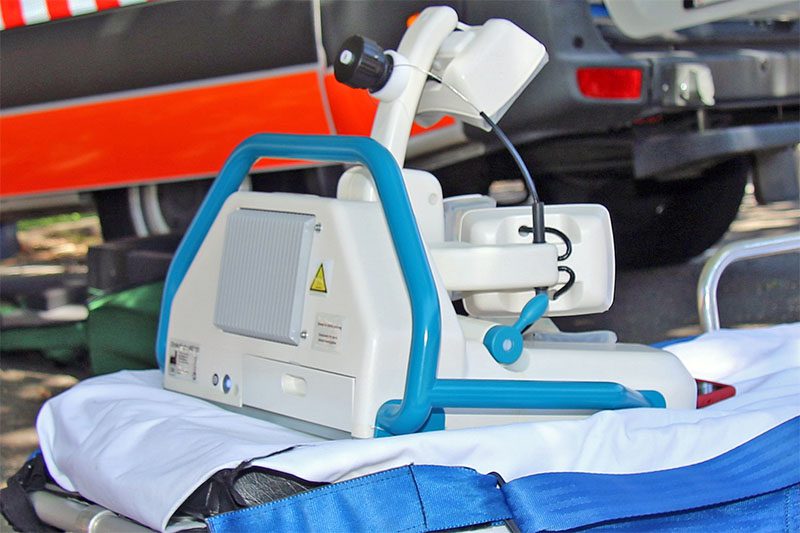Imagine if mine staff suddenly collapse while working in a remote location. What injury could it be? Thanks to new technology being trialled, a stroke can be ruled-out within seconds.
For the first time, the Hunter Medical Research Institute (HRMI) is testing a revolutionary time-saving Stroke Finder helmet, which is compact and portable, enabling rapid deployment in emergency departments and ambulances.
It is promised to be fast-to-operate and able to perform multiple brain measurements in 60 seconds using microwave technology similar to that of mobile phones.
The units developed by Swedish firm Medfield Diagnostics are in Newcastle’s John Hunter Hospital over the next 12 months. Stage two of the study will engage New South Wales Ambulance to explore the potential for stroke therapies to be administered pre-hospital by paramedics, via telehealth connection.
“When an ischemic stroke occurs, the faster we begin to dissolve the clot, the more brain can be salvaged. But we must be sure that it is not a haemorrhagic stroke because the treatment paths are vastly different,” Hunter New England Health stroke leader and professor Chris Levi says.
“This technology, though still in research phase, allows us to image the brain very early, hopefully within what’s called the ‘golden hour’ after a stroke occurs, which could substantially improve outcomes.”
The stroke patient’s head is placed directly on the cushion-sized base and sequentially scanned by antenna pads emitting low-energy microwaves – these pulses “scatter” in brain matter, and bleeding patterns are then detected via an image-generating algorithm. The Stroke Finder is battery powered and wireless, being operated from a tablet.
Professor Mikael Persson, a biomedical engineering specialist from Chalmers University of Technology in Gothenburg, conceived the technology after studying whether mobile telephone usage affected the brain.
“In our computer modelling we simulated how phone microwaves passed through the brain – and could also see how brain matter affected the waves,” he says.
“We then simulated a brain bleed and could directly see an effect on the wave propagation. We initially looked at developing the technology as a monitoring device for neuro-intensive care but our clinical collaborators suggested it could be more useful for stroke triage support because of the need for early diagnostics. Before we can finalise the algorithm we need a lot of raw clinical data – that’s why it is so important to have these international multicentre partnerships where results are pooled.”
HMRI director professor Michael Nilsson says Hunter New England Health and HMRI were a natural choice to collaborate with Medfield Diagnostics because of the team’s renowned expertise in stroke care, rehabilitation and research.
“The accuracy has been very good so far and if the platform can reach the level of CT scanning when it comes to diagnostic safety, the future looks promising,” he says.
The HMRI Sydney Foundation helped secure community funding for the project, including a significant donation from Dr Jerry Schwartz, through the Schwartz Foundation, for the acute care pilot study.
“The treatment of each cause is opposite – one is to thin the blood, the other is to stop the bleeding and maybe evacuate the blood – but both require immediate treatment for best results,” he says.
“This simple device, which can be placed into an ambulance, will differentiate the cause while the patient is being taken to hospital. How fantastic. It is a privilege to be involved in such an important project, which could save so much morbidity both in Australia and around the world. It is actually a world-leading project.”














Add Comment